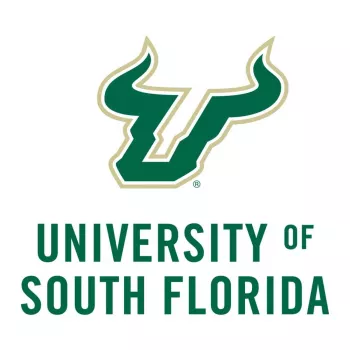
The Bachelor of Fine Arts in Digital Animation from Kennesaw State University prepares students for careers in animation and animation-related industries, or graduate school with a rigorous program in digital animation. Learn more.

Affordable Public University – As a public institution, USF offers more affordable tuition compared to many private art schools, especially for in-state students, making it a great value for those looking to pursue animation.
Comprehensive Digital Arts Program – USF offers a Bachelor of Fine Arts (BFA) in Animation that covers a wide range of digital arts, including 3D animation, visual effects, character design, and digital storytelling.
Strong Faculty Support – The program has experienced faculty members with expertise in both animation and digital media, offering personalized mentorship and feedback to help students grow artistically and technically.
Hands-On Learning Experience – USF focuses on practical, hands-on projects, ensuring students develop strong animation skills by working on individual projects and collaborative team assignments.
Access to Industry Tools – USF provides students with access to industry-standard software such as Maya, ZBrush, Houdini, and Adobe Creative Suite, preparing them for careers in animation and visual effects.
Proximity to Growing Creative Industries – USF’s location in Tampa, Florida, provides access to a growing creative and tech industry, with opportunities for internships and collaboration with local animation studios and tech companies.
Well-Equipped Labs and Studios – Students have access to state-of-the-art labs and animation studios, complete with high-performance computers, motion capture equipment, and professional-grade production tools.
Interdisciplinary Collaboration – The program encourages collaboration between animation students and those in other media arts disciplines such as graphic design, game development, and interactive media, simulating real-world creative environments.
Strong Portfolio Development – USF places a strong emphasis on building a professional portfolio that showcases students’ best work, which is critical for landing jobs in animation, VFX, or game design.
Growing Alumni Network – USF’s growing alumni network offers valuable connections, including those working in animation studios, VFX companies, and gaming firms, which can help with mentorship and job opportunities.
Limited Focus on 2D Animation – While USF offers strong training in 3D animation and VFX, it may not provide as much depth in traditional 2D animation, hand-drawn techniques, or stop-motion animation.
Smaller Animation Program – The animation program at USF may be smaller and more generalized compared to larger, specialized art schools, which could mean fewer resources, faculty, and opportunities for specialized focus.
Limited Industry Exposure – While the program offers solid foundational training, Tampa’s animation industry is not as large or as established as major hubs like Los Angeles or New York, which could limit internship or networking opportunities in some animation sectors.
Less Prestigious Reputation – USF’s animation program may not have the same level of national or global recognition as more specialized animation programs, which could affect visibility in the competitive animation industry.
Fewer Industry-Connected Faculty – While the faculty are experienced, the program might not have as many professors with direct industry experience compared to other animation-focused schools, potentially limiting real-world insight.
Generalized Curriculum – The program offers a broad digital arts and animation education, which may not be deep enough for students who want to focus specifically on animation, game design, or VFX as a dedicated specialization.
Lack of Dedicated Animation Facilities – Unlike schools that focus exclusively on animation, USF may not have animation-specific facilities like dedicated production studios or motion capture labs tailored specifically for animation students.
Relatively Few Animation Electives – The program may offer limited electives or specialized courses in areas like game animation, advanced 3D modeling, or character animation, which might make it harder for students to delve into niche areas.
Limited Resources for Career Development – While USF has resources for career support, it may not have as extensive a network of animation-specific recruiters, workshops, or job fairs as schools with larger, more industry-focused animation departments.
Pressure of Generalist Approach – Since USF is part of a large public university, students may feel like they are just another general arts major, which might not provide the deep, focused training and industry immersion available at schools with a more animation-centric approach.
The University of South Florida offers a solid, affordable animation education with a good balance of technical and creative skills, especially for those interested in 3D animation, VFX, and digital media. However, if you’re seeking more specialized training in traditional animation or a deep focus on animation alone, or if you want a program with strong industry connections, USF may not provide the level of focus and resources offered by other institutions.
Comprehensive Digital Arts Curriculum with Hands-On Learning. USF's program integrates both 2D and 3D animation, emphasizing practical, hands-on projects that develop strong animation skills through individual and collaborative assignments. Students have access to industry-standard software such as Maya, ZBrush, Houdini, and Adobe Creative Suite, preparing them for careers in animation and visual effects.
Limited Focus on Traditional 2D Animation Techniques. While USF offers training in 3D animation and visual effects, it may not provide as much depth in traditional 2D animation, hand-drawn techniques, or stop-motion animation. Students specifically interested in these areas might find the program's emphasis less aligned with their career aspirations.
Other Schools to Consider: